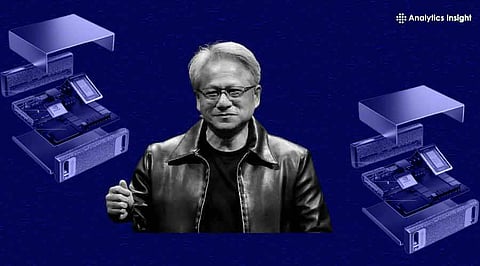

Nvidia CEO and founder Jensen Huang opened the company's AI developer conference, GTC 2025, on Tuesday with a keynote speech that marked the fast pace of artificial intelligence development and the company's aggressive vision for the future. Speaking to a full house, Huang noted that AI is at an ‘inflexion point,’ moving from generative models to sophisticated agentic AI with reasoning.
Labelled the ‘Super Bowl of AI,’ GTC 2025 demonstrated Nvidia’s supremacy of AI infrastructure. Huang estimated that the company’s data centre revenue would reach US$1 trillion by 2028, driven by sky-rocketing demand from leading cloud service providers for GPUs.
“AI understands context, understands what we’re asking, and fundamentally changes how computing is done,” Huang said. He highlighted the transition from early computer vision applications to generative AI and, now, agentic AI, which can reason and make decisions autonomously.
One of the most highly-awaited announcements was Nvidia's new chip architectures: Blackwell Ultra and Vera Rubin. Named after pioneering astronomer Vera Rubin, the new AI hardware promises to revolutionise computing.
Blackwell Ultra will be available in the second half of 2025, with much enhanced AI processing speeds.
Rubin AI, its successor, is due for a late 2026 release, with Rubin Ultra coming in 2027.
The Vera Rubin NVL144 platform will have a next-generation CPU, Vera, and a powerful GPU, Rubin, that can execute 50 petaflops, more than double the ability of Nvidia’s existing Blackwell chips.
For the first time, Nvidia will count chips with multiple dies as distinct GPUs. That is, when Rubin Next comes out in 2027 with four dies in a single chip, it will be counted as four GPUs rather than one.
The future for AI is in robotics, according to Huang’s statement. Nvidia is developing ‘physical AI’ and enabling robots to grasp abstract notions of real-life concepts such as friction, inertia, and object permanence. The corporation announced Isaac GR00T N1, which is an open-source model created to help developers design humanoid robots.
One of the key features of Nvidia's strategy is the generation of synthetic data, which allows AI to learn without the need for human demonstrations in the real world. Nvidia's Cosmos AI model, combined with its Omniverse simulation platform, will create photorealistic video to train robots at lower expense than current techniques.
“Reinforcement learning is the breakthrough of the past few years,” Huang said, describing how AI can learn from virtual environments rather than costly real-world testing.
Nvidia’s AI innovations are being used across industries today. General Motors, an American automaker, is set to include Nvidia’s AI systems in its new line of autonomous vehicles. Nvidia is also working with the company to create custom AI models on Omniverse and Cosmos.
Besides that, Huang announced Halos, an AI-powered safety solution for self-driving vehicles. He made a point about Nvidia’s safety focus, remarking, “We’re the first company in the world, I believe, to have every line of code safety assessed.”
To further reinforce AI development, Huang unveiled Newton, an open-source physics engine for robotics simulation. Newton has been developed together with Google DeepMind and Disney Research and will allow for more precise and effective AI training.
The surprise highlight of the event was when Blue, a tiny robot aide, was seen on stage, following instructions from Huang and showing Nvidia's real-world robotics strength.
Nvidia also commented on fears about China's DeepSeek R1 AI model, which was introduced in January and initially concerned investors. The model, which has been praised for its effective AI reasoning, threatened to be a challenge for Nvidia's chip business. But Huang welcomed the competition, saying that Nvidia's new Blackwell Ultra chips are designed to be optimised for reasoning models, thus perfect for advanced AI applications.
“Over the past two to three years, there was a breakthrough—a foundational advance in artificial intelligence,” Huang said. “We refer to it as agentic AI. It has the ability to reason about how to respond or solve an issue.”
In the future, Nvidia anticipates shipping Rubin AI systems starting in 2026, with even more capable variants in 2027. The company's move toward custom CPU design, such as Vera, represents a drastic change from the use of off-the-shelf ARM designs, following similar steps by Qualcomm and Apple.
With cloud providers quickly deploying Nvidia's Blackwell GPUs three times the pace of its earlier Hopper generation, the company is leading the charge in AI acceleration.
As GTC 2025 came to a close, one thing was certain: Nvidia is not only leading the AI industry, it is forging the future of computing itself.
